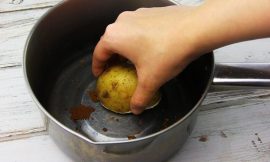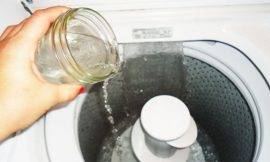
Did you know that mold can start growing in your washing machine within just a few days if proper care isn’t taken? Yikes! It’s a problem so many of us face, and probably something that doesn’t cross our minds—until that musty smell hits us. As someone who values a clean home, I understand the frustration that comes from finding mold lurking in your favorite clothes or, worse, in your washing machine! But fear not; I’m here to guide you through the best washing machine settings to keep mold at bay. In this comprehensive guide, we’ll unfold everything you need to know—from the ideal washing cycles to clever maintenance tips—so you can enjoy fresh, clean laundry without worries!
Understanding Mold Growth in Washing Machines
Mold can be a persistent issue in washing machines, thriving in damp environments. The combination of moisture, warmth, and organic matter creates the perfect breeding ground for mold spores.
Factors Contributing to Mold Growth
Several key factors contribute to the development of mold inside your washing machine. High humidity is a primary culprit, alongside the heat generated during cycles. Residual detergent and dirt can also accumulate, providing an additional food source for mold. It's crucial to be aware of how these elements come together to create an environment ripe for mold growth.
Common Signs of Mold Presence
Recognizing the signs of mold in your washing machine is essential for prompt action. Check for musty odors, visible black or green spots inside the drum or rubber door seal, and discoloration on laundry after washing. These indicators can help you catch mold before it becomes a more significant issue.
Choosing the Right Washing Machine Settings
Selecting the right washing machine settings is vital in the fight against mold.
Overview of Washing Machine Settings
Higher temperatures can be particularly effective at killing mold spores. Utilize settings designed for sanitization or heavy-duty cleaning when dealing with stubborn mold issues.
Importance of Temperature Settings
When choosing between hot and cold washes, remember that hot water is typically more efficient at eliminating mold and bacteria. In contrast, cold washes may not effectively remove spores, especially if the clothing is soiled or has been in a musty environment.
Recommended Spin Cycles
The spin cycle is just as important as the wash cycle. Utilizing higher spin speeds can help extract moisture from fabrics, reducing the damp conditions that mold loves. Always opt for a spin cycle that dries your laundry effectively to help prevent mold growth.
Optimal Detergents and Additives to Fight Mold
The choice of detergent and additives can significantly impact mold prevention.
Types of Detergents
Look for detergents that contain enzymes or oxygen bleach, which can help break down organic matter and reduce mold growth.
Benefit of Adding Vinegar or Baking Soda
Incorporating white vinegar or baking soda during washes can be incredibly effective against mold. Vinegar has natural antifungal properties and can help neutralize odors, while baking soda acts as a gentle abrasive, removing residue that can facilitate mold growth.
Fabric Softeners: Friend or Foe?
While some fabric softeners can help freshen laundry, they can also create a film in your washing machine that fosters mold. It’s essential to choose a fabric softener that is specifically labeled as low-residue or consider reducing its use altogether.
Best Practices for Maintaining a Mold-Free Washing Machine
Maintaining your washing machine is crucial to keeping mold at bay.
Regular Cleaning Schedules
Establish a regular cleaning schedule for your washing machine. Run an empty cycle with hot water and vinegar monthly to help remove any potential mold build-up.
Importance of Leaving the Door Ajar
After use, leave the washing machine door slightly ajar. This allows air to circulate and helps dry the interior, making it less hospitable to mold.
Tips for Drying Out the Drum
After each use, wipe down the drum and the rubber seals with a dry cloth. Additionally, take a moment to check the drain, ensuring no leftover water remains to create a conducive environment for mold.
Seasonal Considerations for Laundry Care
Adapting your laundry routine to seasonal changes can help in mold prevention.
Adjusting Washing Machine Settings
In humid weather, consider using hotter settings more frequently to combat increased moisture in the environment.
Additional Tips for Humid Seasons
During humid months, try to do laundry during less humid times of the day, if possible. Additionally, consider using a dehumidifier in your laundry space.
Winter Preparation for Your Washing Machine
As temperatures drop, prepare your washing machine to prevent freezing. Ensure that any residual water is drained and keep the door closed to avoid drafts, but remember the earlier tip about airflow to promote mold-free conditions.
Conclusion
Keeping your laundry fresh and free from mold is entirely achievable once you know the best washing machine settings and maintenance practices! By understanding how mold grows and adopting these simple tips, you'll ensure that every wash leaves your clothes smelling like they just came from a sunlit meadow. So, let’s put this knowledge to action! Take a moment to reassess your laundry schedule and settings today. Happy washing!





